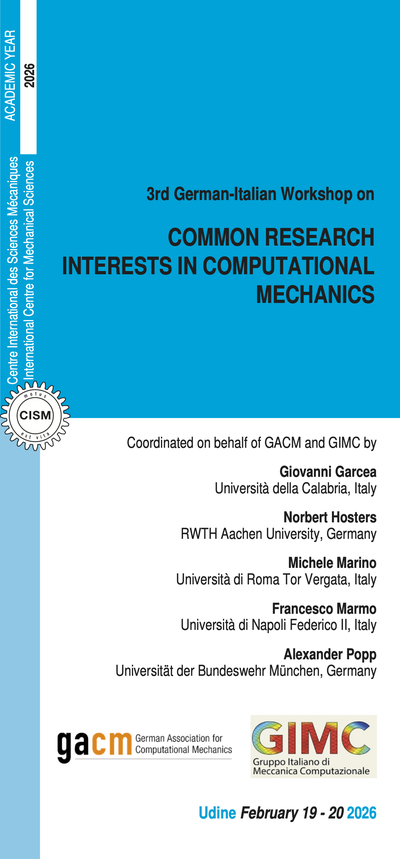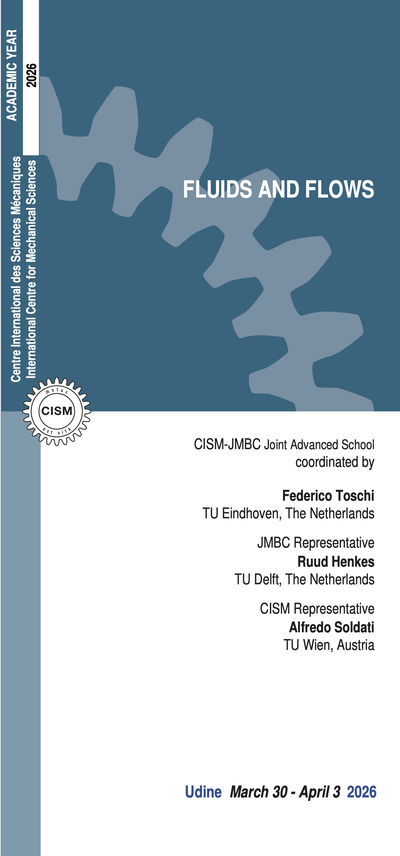In 1994 for his Dirac Memorial Lecture, Pierre Gilles de Gennes writes "The borders between great empires are often populated by the most interesting ethnic groups."
He then makes an analogy with his work on soft interfaces which lies between two forms of bulk matter. The same analogy holds for Sports Physics which lies at the border between four great empires, namely sports, biomechanics, physiology and physics. The purpose of the school is to explore this territory and to illustrate its diversity and research potential.
The course by Professor P.E. di Prampero on human locomotion will stand at the border between physiology and physics. The course will be devoted to a detailed analysis of the main energetic and physiological characteristics of the most common forms of human locomotion on land: walking, running and cycling.
The course by Professor A. Hosoi will stand at the border between data science and sport science e.g. how can machine learning and neural networks help basketball players make good decisions on the court? This type of practical question will be at the root of the discussion on the growing adoption of these types of new scientific tools in sports.
The course by Professor C. Cohen on the physics of motion control will explore the border between physics and biomechanics. Starting from field observations in weightlifting, the lectures will go through deep questions of force generation and the associated questions of the precision of the motion.
The course by Professor L. Bocquet on friction will stand at the border between physics and material science. In all racing sports, the goal of attaining the maximal speed is achieved via a deep empirical knowledge of friction reduction. The primary idea behind this course is to connect this knowledge to the associated underlying science.
The course by Professor A.R. Harland will stand at the border between design and mechanics and will include discussions of his own experience working with a wide range of partners including adidas, FIFA, International Cricket Council, BISFed and FIH.
Finally the course by Professor C. Clanet on the physics of races will explore the region between sport science, physical models and optimization. We will start from field data obtained during Olympic races in cycling, rowing, kayaking and swimming, derive simplified models which are able to recover the main observed features, and discuss model generalization.
Sports Physics and Technology will appeal to designers, engineers, PhD students and young researchers in physics, biomechanics, physiology, data analysis, and materials. The school will cover different aspects of sports using physics as the common denominator. Although the course is aimed at PhD students and young researchers in physics and sport sciences, the lectures will include sports applications and will be accessible to designers, engineers and sport scientists alike.
A poster session with 3 minute oral presentations of the posters will be included in the school. Participants will also be encouraged to present a 3 minute video. Prizes for the best posters and videos will be awarded.
Bo Persson, Sliding Friction: Physical Principles and Applications, Springer.
“Nanorheology of interfacial water during ice gliding”, L. Canale, J. Comtet, A. Nigues, C. Cohen, C. Clanet, A. Siria and L. Bocquet, Physical Review X 9, 041025 (2019).
Joseph B. Keller, Optimal Velocity in a Race, The American Mathematical Monthly, Vol. 81, No. 5 (May, 1974), pp. 474-480.
C. Cohen, E. Brunet, J. Roy and C. Clanet, Physics of road cycling and the three jerseys problem, Journal of Fluid Mechanics, 914, A38.
Cohen C., Texier B. Darbois, Laffaye G., Auvray L. and Clanet C. 2015 Weightlifting and the actomyosin cycle, Proc. R. Soc. A., 4712015047320150473.
P.E. di Prampero, C. Osgnach. Energy Cost of Locomotion on Land and in Water. In “Muscle and Exercise Physiology”, Jerzy A. Zoladz, Editor. Elsevier, Academic Press, 2018, Ch.9, pp 183 - 213.
P.E. di Prampero et al. Running at Altitude: the 100-m Dash. Eur. J. Appl. Physiol., DOI/10.1007/ s00421-021-04752-g.
Matthew Ward et al. “Characterisation of football trajectories for assessing flight performance.” Proceedings of the Institution of Mechanical Engineers, Part P. 233, 16-26 (2019).
Chris Peploe et al. “Relationships between technique and bat speed, post-impact ball speed, and carry distance during a range hitting task in cricket.” Human Movement Science 63, 34-44 (2019).
Daniel Getty et al. “Luck and the Law: Quantifying Change in Fantasy Sports and Other Contests.” SIAM Review 60, No. 4, 869-887 (2018).
Jim Albert et al. “Report of the Committee Studying Home Run Rates in Major League Baseball.” (2018). http://www.mlb.com/ documents/7/9/4/278128794/ Full_Report_of_the_Committee_ Studying_Home_Run_Rates_in_ Major_League_Baseball_052418. pdf.
Replaced by Guillaume Millet
5 lectures on: friction and dissipation processes in various sports: general laws of frictions at interfaces: from solid-on-solid friction, to the various hydrodynamic frictions of flowing fluids at solids; from macroscopic behaviors down to microscopic mechanisms at the nanometric scales. Case studies of various winter and summer sports: ice skating, ski, sailing, rowing, etc.
5 lectures on: the Physics of races, starting with the seminal theory of the optimal strategy for running developed by J.B.Keller in 1973. The connection of this work to human physiology will be discussed and the extended version with fatigue will be exposed. In a second stage, the generalization of these ideas to swimming, rowing, kayaking and cycling races will be developed.
5 lectures on: How does a human lift a weight? How does he jump? How does he throw a weight? Those questions are answered empirically by athletes and we will first use mechanics to understand the solutions they find and the records they achieve. In a second step, we will dive into the physiology of muscle and motion control and discuss what the observations made on actual data can reveal the microscopic features of human body working.
5 lectures on: the energetics of walking, running and cycling as a function of: speed, acceleration, incline of the terrain and altitude (air density). It will be shown that athletic subjects riding “bicycles” with streamlined body moving on a rail, in ≈20s performances with flying start at sea level can reach the absolute maximal speed on human powered vehicles: ≈150 km·h-1.
5 lectures on: engineering measurement and design of sports equipment, laboratory based sports event reconstruction, kinetic and kinematic analysis of impacts in sport, injury prevention and research and development of World Cup soccer balls.
5 lectures on: the intersection of data, probability and sports. Topics include: machine learning and neural nets to assess decision-making in basketball; the role of skill and luck in fantasy sports and other contests; point-particle models for player dynamics in soccer; and the origin of the increase in home runs during the 2016 and 2017 Major League Baseball season.
5 lectures on: Neuromuscular fatigue in prolonged exercise: from health to performance. Topics include: Energetic cost of running, determining factors of endurance sports, gender differences in fatigue, and running shoes.
The course is offered in a hybrid format giving the possibility to attend the course also by remote (on Microsoft Teams platform). On-site places are limited and assigned on first come first served basis.
The registration fees are:
- On-site participation, 600.00 Euro + VAT* * where applicable (bank charges are not included) Italian VAT is 22%.
This fee includes a complimentary bag, five fixed menu buffet lunches, hot beverages, downloadable lecture notes.
Deadline for on-site application is August 19, 2022.
- Online participation, 250.00 Euro + VAT* * where applicable (bank charges are not included) Italian VAT is 22%.
This fee includes downloadable lecture notes.
Deadline for online application is September 7, 2022.
Application forms should be sent on-line through CISM website
A message of confirmation will be sent to accepted participants.
Upon request a limited number of on-site participants can be accommodated at CISM Guest House at the price of 30 Euro per person/night (mail to: foresteria@cism.it).
CANCELLATION POLICY
Applicants may cancel their registration and receive a full refund by notifying CISM Secretariat in writing (by email) no later than:
- August 19, 2022 for on-site participants (no refund after the deadline);
- September 7, 2022 for online participants (no refund after the deadline).
Cancellation requests received after these deadlines will be charged a 50.00 Euro handling fee. Incorrect payments are subject to Euro 50,00 handling fee.
GRANTS
A limited number of participants from universities and research centres who are not supported by their own institutions can request the waive of the registration fee and/or free lodging.
Requests should be sent to CISM Secretariat by July 19, 2022 along with the applicant's curriculum and a letter of recommendation by the head of the department or a supervisor confirming that the institute cannot provide funding. Preference will be given to applicants from countries that sponsor CISM.





